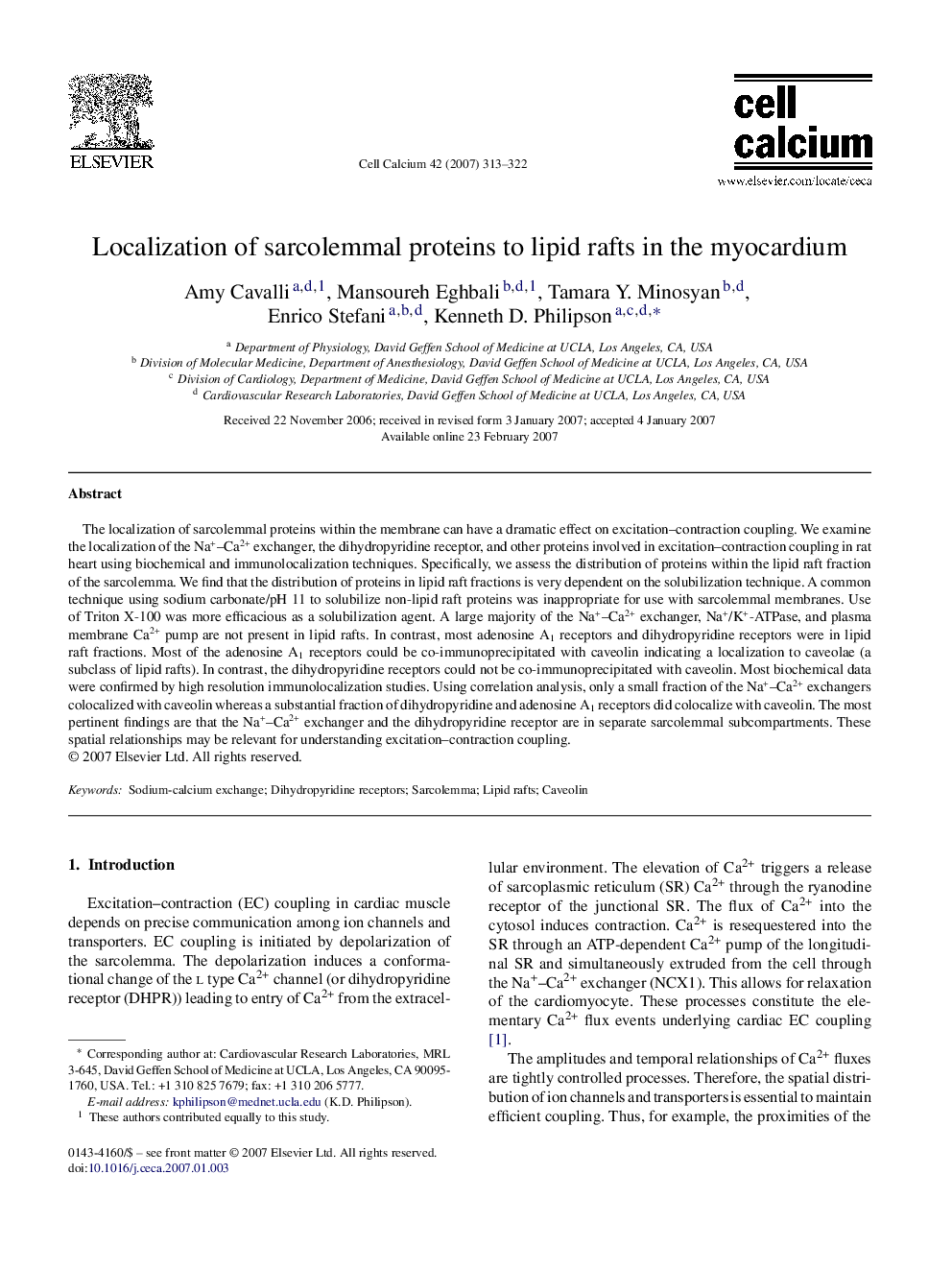| کد مقاله | کد نشریه | سال انتشار | مقاله انگلیسی | نسخه تمام متن |
|---|---|---|---|---|
| 2166382 | 1091850 | 2007 | 10 صفحه PDF | دانلود رایگان |

The localization of sarcolemmal proteins within the membrane can have a dramatic effect on excitation–contraction coupling. We examine the localization of the Na+–Ca2+ exchanger, the dihydropyridine receptor, and other proteins involved in excitation–contraction coupling in rat heart using biochemical and immunolocalization techniques. Specifically, we assess the distribution of proteins within the lipid raft fraction of the sarcolemma. We find that the distribution of proteins in lipid raft fractions is very dependent on the solubilization technique. A common technique using sodium carbonate/pH 11 to solubilize non-lipid raft proteins was inappropriate for use with sarcolemmal membranes. Use of Triton X-100 was more efficacious as a solubilization agent. A large majority of the Na+–Ca2+ exchanger, Na+/K+-ATPase, and plasma membrane Ca2+ pump are not present in lipid rafts. In contrast, most adenosine A1 receptors and dihydropyridine receptors were in lipid raft fractions. Most of the adenosine A1 receptors could be co-immunoprecipitated with caveolin indicating a localization to caveolae (a subclass of lipid rafts). In contrast, the dihydropyridine receptors could not be co-immunoprecipitated with caveolin. Most biochemical data were confirmed by high resolution immunolocalization studies. Using correlation analysis, only a small fraction of the Na+–Ca2+ exchangers colocalized with caveolin whereas a substantial fraction of dihydropyridine and adenosine A1 receptors did colocalize with caveolin. The most pertinent findings are that the Na+–Ca2+ exchanger and the dihydropyridine receptor are in separate sarcolemmal subcompartments. These spatial relationships may be relevant for understanding excitation–contraction coupling.
Journal: Cell Calcium - Volume 42, Issue 3, September 2007, Pages 313–322